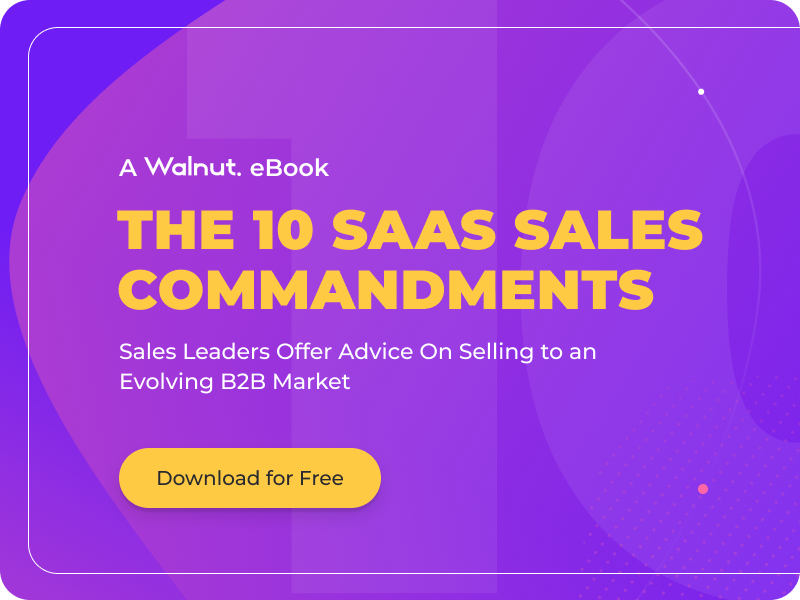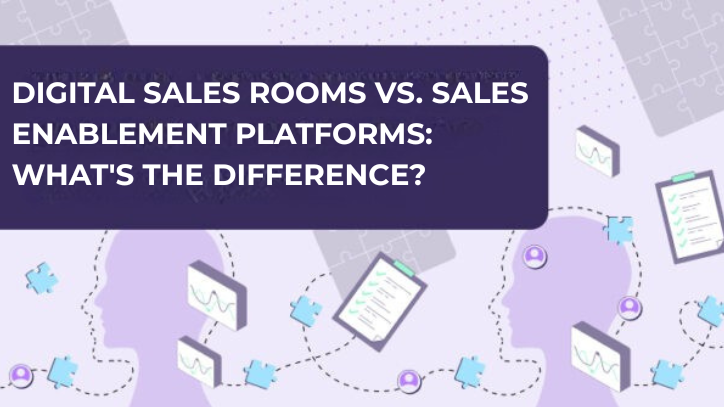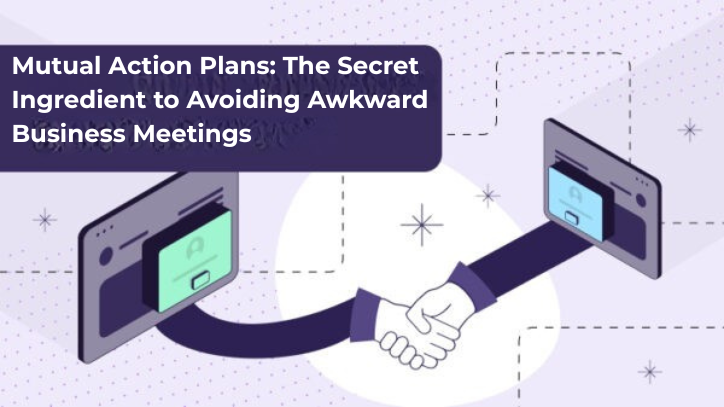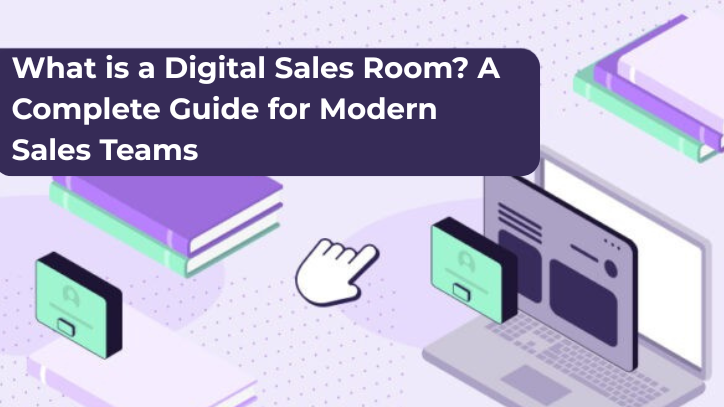If only selling sass was a job, we’d be billionaires.
But selling SaaS (software as a service) is cool too, we suppose.
In contrast to traditional sales, selling software requires sellers to have a combination of customer service and digital know-how so that buyers can quickly understand the unique value of the technology offered and how it works.
That’s why both buyers and sellers love using self-service tools like interactive product demos or interactive product tours to learn about solutions throughout each step of the sales funnel.
But when it comes to strategies for selling, there are a bunch of sales methodologies that salespeople can use to help their customers quickly fall in love with their product and sign on the dotted line.
Because we are here for you, we selected the top 12 sales methodologies that can help you sell software.

What is a sales methodology?
A sales methodology refers to a collection of principles that govern how you offer your products or services to consumers. It is a sales philosophy that is frequently founded on a specific assumption about customer psychology.
It outlines how you should engage prospects and what you should say to them. It provides a structure for your representative to contact the client and close the deal. It can be beneficial for a company when an entire sales team addresses clients in a consistent manner and language.
Most SaaS sales agents adopt a focused approach, studying the potential client’s business to identify their pain points and developing a tailored customer journey throughout every level of the sales funnel.
If you are wondering which one will work best for you and your team, dive in and get to know the methodologies more.
Top 12 most useful sales methodologies for SaaS
The following are some of the best methodologies that can be used when selling software as a service:
1. Solution selling
Instead of focusing on the product, solution selling emphasizes the ways that the product can meet each customer’s needs.
Sales reps can do this by evaluating a prospect’s demands thoroughly and making sure to offer specialized products and services that would best fit their unique challenges and concerns.
To use solution selling, you need to provide prospects with in-depth and long-term reasons for purchasing the product. Place a lot of emphasis on the customer’s pain points that they might be experiencing and the ways your product can help solve them.
The solution selling process usually follows six stages:
- Prospecting – Find prospects that are looking to solve a problem your product solves.
- Qualification – Weed out any irrelevant prospects and make sure you’re talking to the person who makes the final decision.
- Discovery – Find out what needs the buyer has and pitch solutions you already have or can deliver.
- Add value – Work with your customer champion to determine how they can use your product to solve their needs.
- Present – Pitch the custom solution, taking care to show the return on investment.
- Close – Finish with a deal that works for both of you.
Learn more about the solution selling methodology.
2. SPIN selling
SPIN selling is a sales methodology where representatives plan sales calls using four types of questions. They fall into the categories of situation, problem, implication, and need-payoff.
This method focuses on buyer concerns and helps salespeople create the advisory client connections that sophisticated agreements demand.
The methodology follows stages that include: the opening stage, investigating the general situation, demonstrating your capability to solve the problem, and obtaining a commitment from your prospect.
Learn more about the SPIN selling methodology.
3. MEDDIC sales process
The MEDDIC sales qualification methodology is a series of questions used to assess prospects and potential customers.
The letters stand for Metrics, Economic Buyer, Decision Criteria, Decision Process, Identify Pain, and Champion.
The MEDDIC selling methodology assists you in identifying and qualifying your target audience. This way, you’ll know you’re speaking to the correct individuals in the appropriate way, which will make closing transactions simpler.
Learn more about the MEDDIC sales process.
4. Inbound selling
In its most basic form, the inbound sales methodology aims to provide appealing content that is focused on your prospects’ pain points and that draws your audience in.
The generation of inbound leads occurs through many different channels, such as your website content, third-party platforms (like social media, podcasts, and more), and search engines (such as Google).
Inbound selling follows inbound marketing tactics that focus on providing value with each connection, building rapport and partnerships, and ultimately converting the audience into customers.
So, while your marketing team generates inbound leads, your sales team utilizes the inbound selling methodology to turn those leads into paying customers.
Salespeople have four separate actions that match the prospect’s journey. They include:
- Identify – First, find prospects who are the right fit for your product.
- Connect – Next, connect with these prospects to qualify them based on the challenges they are facing and the ability of your product to bring them value.
- Explore – You’ll then work to understand your qualified leads even more, including who else they are considering, so you can pitch your product in a way that sets you apart.
- Advise – When offering advice, the aim is to show the prospect that your solution is in a unique position to address their needs and solve the pains they described.
Learn more about inbound selling.
5. Challenger Sales model
Co-authors Matthew Dixon and Brent Adamson, who launched The Challenger Sale, believe that every B2B salesperson belongs to one of these five persona categories: lone wolves, relationship builders, reactive problem solvers, hard workers, and challengers.
Their research showed that 40% of the top-performing reps were challengers. Why are they so effective? The authors say it’s because they do this:
- Teach – They begin by teaching the prospect about business problems, making commendable observations, and showing an ability to come up with new ideas.
- Tailor – They customize their communications to fit the prospect’s needs.
- Take control – They take control of the sale by being focused on the end goal instead of coming across as likable.
Learn more about the Challenger Sales model.
6. Conceptual Selling
Conceptual Selling is based on listening to the prospect to fully understand what challenges they face from a conceptual point of view. Then, using that insight, the salesperson pitches their product or service in a way that fits the concept.
Conceptual sellers ask questions to gain insight. These questions include:
- Confirmation questions to verify the information
- New information questions to gain clarity about the concept
- Attitude questions that aim to understand the prospect’s personal feelings about the project
- Commitment questions to find out what the prospect is willing to commit
- Basic questions to speak up about any potential issues
Learn more about the Conceptual Selling methodology.
7. SNAP Selling methodology
SNAP Selling is a methodology described in Jill Konrath’s 2012 book SNAP Selling: Speed Up Sales and Win More Business with Today’s Frazzled Customers.
The acronym stands for:
- Keep it Simple
- Be i(N)valuable
- Always Align
- Raise Priorities
Jill’s method says that instead of just making one decision (to buy or not to buy), customers make additional decisions that include access, choosing to move away from the present state, and changing resources. These are milestones salespeople can use to hit the right notes.
8. Sandler Selling System
The Sandler Selling methodology, founded by David Sandler in 1967, emphasizes sales representatives acting as consultants rather than forceful salespeople.
So, rather than marketing a solution to someone who doesn’t need it, this method focuses on asking the proper questions to qualify the prospect as early as possible and know whether or not to commit more resources to pursue the lead.
It follows this process:
- Bond with a prospect while building rapport
- Discuss expectations and roles
- Pinpoint the pain points
- Discuss the budget
- Wait for purchase or no purchase decision
- Fulfill the expectations set
- Provide post-sales services
Learn more about the Sandler Selling System for SaaS sales.
9. N.E.A.T. sales methodology
N.E.A.T. sales methodology highlights the importance of sales professionals paying close attention to the prospect. Understanding prospects’ challenges allows salespeople to dive deeply into their demands and improve their interactions for better results.
Here’s what this methodology advocates you pay attention to:
- Core Needs – Focus on deeper challenges instead of surface-level pain.
- Economic Impact – You are encouraged not just to present your return-on-investment projections but also to help the prospect comprehend the financial impact of having the product compared to not having it.
- Access to Authority – Can the prospect get you in touch with someone that will make the final decision or at least speak to that person on your behalf?
- Timeline – The timeline refers to the inciting event that makes the prospect want to make their decision. Missing the deadline should have consequences, or it is considered unimportant.
10. Target Account Selling (TAS)
Target Account Selling operates on the idea that picking the ideal prospects to engage is the most critical aspect of the sales funnel, which implies being keen during interactions and conducting extensive research during qualification.
There is a heavy emphasis on sales automation to help identify the ideal prospect.
- Marketing and sales teams start by collaborating to develop the Ideal Customer Profile, which is a list of broad characteristics of best-fit clients.
- Following the development of an Ideal Customer Profile by the sales and marketing departments, the sales team proceeds to study each well-qualified account. This research enables them to create distinct personas for each decision-maker in each account.
- Sales and marketing teams nurture the prospects through the sales funnel and purchasing process until the transaction is completed. Both teams then maintain regular contact with the customer success team, which may provide considerable insight into the user experience for future targets.
There is a clear prioritization of quality over quantity when it comes to prospecting leads and getting accounts.
11. Command of the Sale
The Command of the Sale approach entails marketing with urgency, a healthy dose of confidence, comprehensive product knowledge, and outstanding tactical awareness—all of which are compelling in their own right.
The effectiveness of this process is dependent on a salesperson’s understanding of what a prospect intends to achieve, how they want to create value for the organization, how the solution can deliver on those aspects, how the prospect quantifies success, and why the salesperson’s business stands out from rivals.
12. Gap Selling
Gap Selling is a sales strategy that aims to identify a customer’s current condition and gradually move them toward their desired future state.
The methodology is centered on the problems that a prospect is experiencing, with salespeople delving deeply into the discovery process to comprehend the full scope of a prospect’s problem or pain point. Reps will then collaborate with them to determine the gap between their current state and the desired future outcome.
Every interaction after that seeks to bridge the gap by identifying concerns and proposing remedies.
Learn more about the GAP Selling methodology.
How to choose the right sales methodology for your SaaS
Your organization has a unique culture and must therefore have a unique sales strategy. Nobody can confidently point to one model and say it is “ideal” for your company. Anyone who does is trying to sell you something.
So, what do you do?
A combination of diverse sales tactics may be the ideal approach for your company. In all approaches, knowing what your customers would like, having a good handle on what you can take on, and having the ability to qualify leads early are important tenets to keep in mind.
Combine sales tactics to determine what works best in your industry. Take the best elements from each and apply them to close more deals.
Empower your sales team with interactive demos
One thing all these methodologies have in common is that they all require the salesperson to know the product well and be able to show the prospect the value gained in choosing that product and not any other.
That’s probably why interactive demo software (like Walnut) are becoming the norm for SaaS sales teams across the industry. These platforms allow sales teams to create better demo experiences for prospects so that they can immediately try the product themselves and understand its value.
The benefits of this are game-changing. Not only will your prospect enjoy your sales process more, but you can track how they click through your demo and see their intent to buy, how engaged they are, and what areas of your product interest them most. This’ll help you position your product in a way that brings them value.
So what are you waiting for? If you want to improve your SaaS sales process, click that “Get Started” button on the top of the page.





